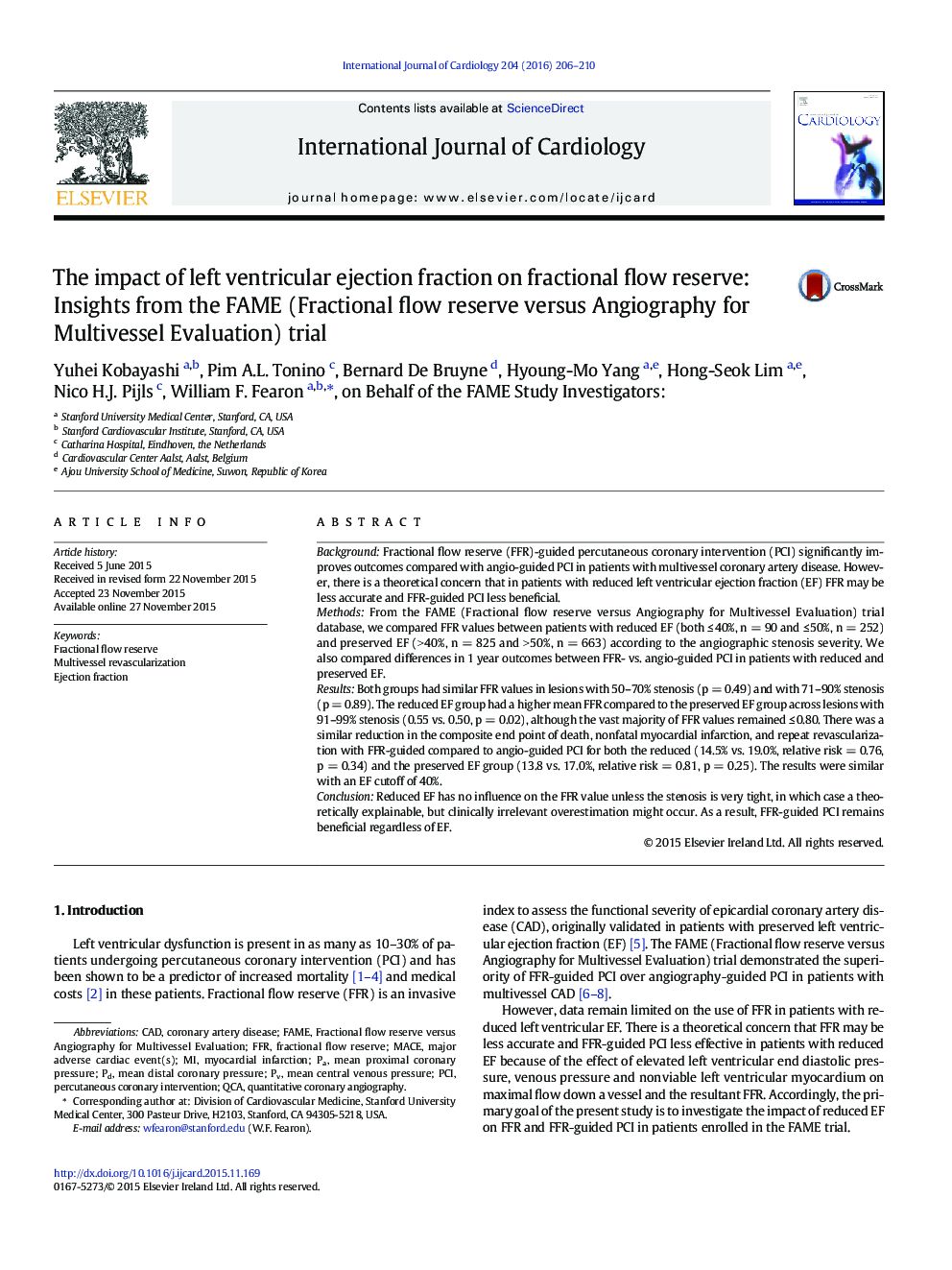| کد مقاله | کد نشریه | سال انتشار | مقاله انگلیسی | نسخه تمام متن |
|---|---|---|---|---|
| 2928687 | 1576147 | 2016 | 5 صفحه PDF | دانلود رایگان |
BackgroundFractional flow reserve (FFR)-guided percutaneous coronary intervention (PCI) significantly improves outcomes compared with angio-guided PCI in patients with multivessel coronary artery disease. However, there is a theoretical concern that in patients with reduced left ventricular ejection fraction (EF) FFR may be less accurate and FFR-guided PCI less beneficial.MethodsFrom the FAME (Fractional flow reserve versus Angiography for Multivessel Evaluation) trial database, we compared FFR values between patients with reduced EF (both ≤ 40%, n = 90 and ≤ 50%, n = 252) and preserved EF (> 40%, n = 825 and > 50%, n = 663) according to the angiographic stenosis severity. We also compared differences in 1 year outcomes between FFR- vs. angio-guided PCI in patients with reduced and preserved EF.ResultsBoth groups had similar FFR values in lesions with 50–70% stenosis (p = 0.49) and with 71–90% stenosis (p = 0.89). The reduced EF group had a higher mean FFR compared to the preserved EF group across lesions with 91–99% stenosis (0.55 vs. 0.50, p = 0.02), although the vast majority of FFR values remained ≤ 0.80. There was a similar reduction in the composite end point of death, nonfatal myocardial infarction, and repeat revascularization with FFR-guided compared to angio-guided PCI for both the reduced (14.5% vs. 19.0%, relative risk = 0.76, p = 0.34) and the preserved EF group (13.8 vs. 17.0%, relative risk = 0.81, p = 0.25). The results were similar with an EF cutoff of 40%.ConclusionReduced EF has no influence on the FFR value unless the stenosis is very tight, in which case a theoretically explainable, but clinically irrelevant overestimation might occur. As a result, FFR-guided PCI remains beneficial regardless of EF.
Journal: International Journal of Cardiology - Volume 204, 1 February 2016, Pages 206–210
